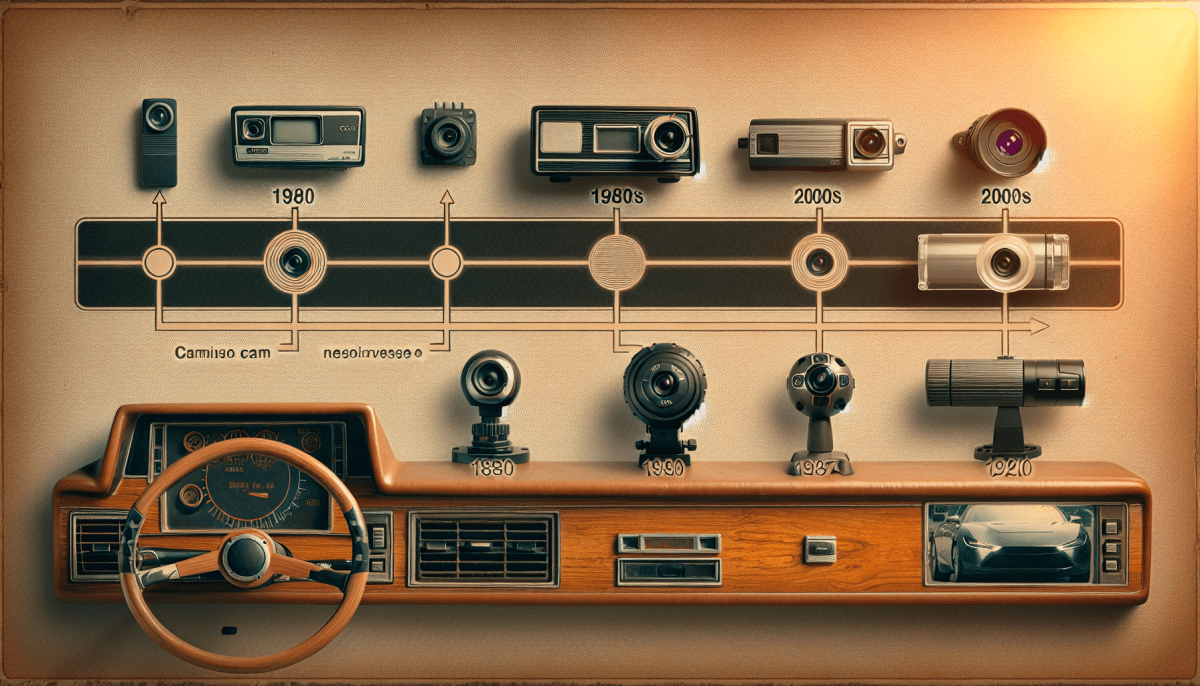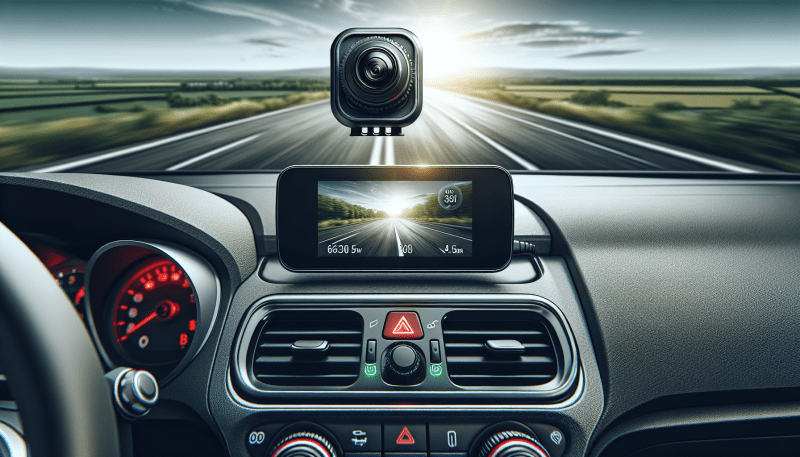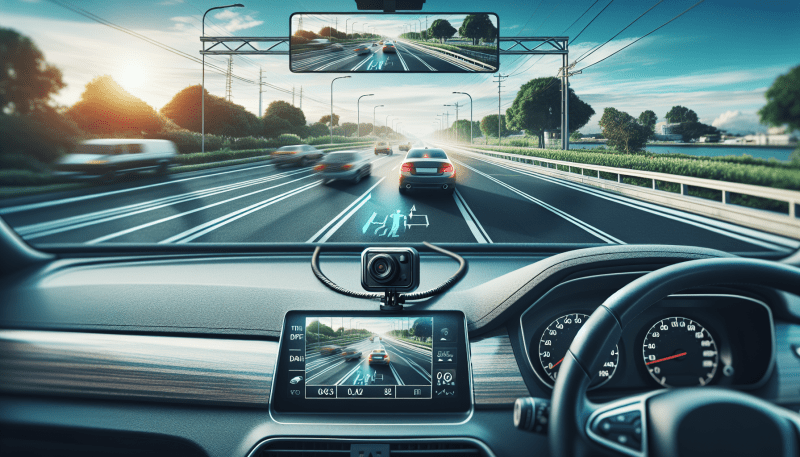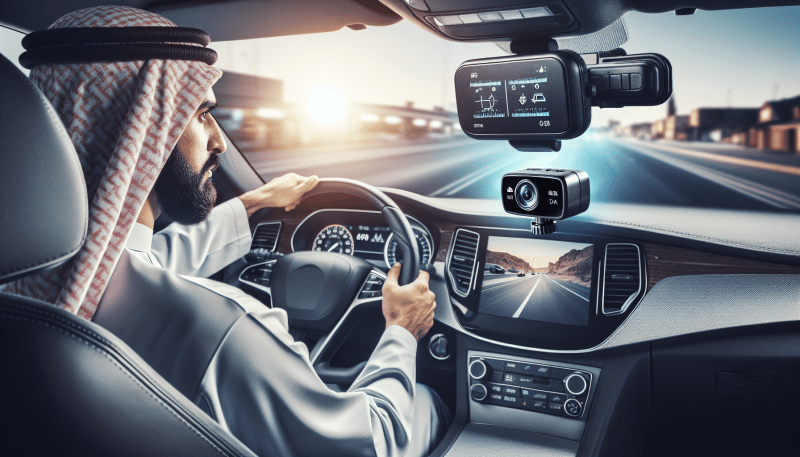The evolution of car dash cams has been a fascinating journey, marked by numerous groundbreaking innovations over the years. These devices have revolutionized the way we document our driving experiences, enhancing both safety and security on the road. Let's take a brief look at the origins and major milestones in the history of dash cams.
The concept of dash cams can be traced back to the early 1990s when video cameras were first adapted for use in cars. At that time, these devices were large, bulky, and expensive, making them inaccessible to the majority of drivers. However, it was in Russia where the dash cam revolution truly began. Due to high levels of corruption and insurance fraud, Russian drivers started equipping their cars with these cameras as a means of protection against false claims and illegal activities.
The real breakthrough for dash cams came in the early 2000s when advancements in miniature camera technology and memory storage made it possible to develop smaller, more affordable devices. Dash cams became increasingly popular not just in Russia but around the world. They provided a means of capturing crucial evidence in accident disputes, potential insurance fraud cases, and even spectacular road events that quickly gained popularity on the internet.
Today, dash cams have evolved even further, incorporating advanced features like GPS tracking, motion sensors, and high-resolution video recording capabilities. These devices have become an essential accessory for many drivers, ensuring their safety, providing crucial evidence, and even offering peace of mind while on the road. From their humble beginnings in Russia to their global popularity today, dash cams continue to shape the way we observe and document the world around us.
From Bulky Beginnings to Sleek Guardians: The Dash Cam Makeover
The evolution of car dash cams has been a remarkable journey, transforming these devices from bulky, primitive gadgets to sleek, high-tech guardians on the road. Dash cams, or dashboard cameras, have come a long way since their early days, proving to be invaluable tools for both drivers and law enforcement agencies worldwide.
In their infancy, dash cams were predominantly large, boxy units mounted on the dashboard or windshield, often obstructing the driver's view. These early models were primarily used by law enforcement officers for recording evidence in the event of accidents or other incidents. They offered low-resolution video, limited storage capacity, and were powered by bulky batteries that required frequent recharging.
However, as technology advanced, the size and design of dash cams underwent a radical transformation. Modern dash cams are now compact and discreet, integrating seamlessly into the vehicle's interior. They boast high-definition imaging, wide-angle lenses, and advanced sensors that detect sudden movements or impacts, activating automatic recording functions. Many models can even capture footage in low-light conditions or display GPS information.
Moreover, dash cams have evolved beyond their primary purpose of capturing accidents. Many new features have been added to enhance driver safety and convenience, such as advanced driver-assistance systems (ADAS). These systems can issue warnings for lane departures, forward collisions, or drowsy driving, ensuring a safer and more attentive driving experience.
Recording the Road: How Dash Cams Became Your Silent Witness
Car dash cams have evolved from a niche gadget to a widely popular technology that has revolutionized the world of driving. Originally introduced as a tool for law enforcement and professional drivers, dash cams have found their way into the everyday lives of regular drivers, providing invaluable evidence and peace of mind on the road. Let's take a closer look at the history of these silent witnesses.
The concept of dash cams was first introduced in the early 1990s, primarily for use by the police and commercial truck drivers. These early dash cams were bulky and required installation by professionals. They used analog video recording on magnetic tape and provided limited quality footage. However, they quickly proved their worth as a reliable source of evidence in accidents and other incidents on the road.
As technology advanced, dash cams became more accessible and user-friendly. In the mid-2000s, digital dash cams emerged, utilizing memory cards for storage and offering higher video quality. They also became compact and easily mountable on car windshields, making them more appealing to everyday drivers.
In recent years, the popularity of dash cams has soared due to their numerous benefits. They offer drivers a sense of security and provide crucial evidence in the event of accidents or legal disputes. Additionally, some dash cams come equipped with features such as GPS tracking, G-force sensors, and built-in microphones, enhancing their functionality even further.
Future Perspectives: Advancements Shaping the Dash Cam Industry
As the car dash cam industry continues to evolve and gain popularity, several advancements are shaping its future. These technological developments are revolutionizing the capabilities and functionality of dash cams, making them an integral part of modern vehicles. Let's explore some of the significant advancements that we can expect to see in the near future.
1. Enhanced Video Quality: One of the key areas of focus for future dash cams is improving the video quality. With advancements in camera technology, we can expect higher resolution capabilities, enhanced low-light performance, and superior image stabilization. These improvements will ensure that dash cams capture clearer and crisper footage, even in challenging conditions. 2. Artificial Intelligence Integration: Artificial intelligence (AI) is set to play a crucial role in the future of dash cams. With AI integration, dash cams will be able to automatically detect and record specific events, such as accidents or sudden lane departures. AI algorithms will analyze the footage in real-time, providing valuable insights to the driver and enhancing overall safety. 3. Connectivity and Cloud Integration: Connected dash cams are becoming increasingly popular, and this trend is expected to continue in the future. With built-in Wi-Fi and cellular connectivity, dash cams will be able to upload recorded footage to the cloud, offering convenient access to videos from any device. This enables seamless sharing, easy retrieval of footage, and even remote live streaming capabilities. 4. Advanced Driver Assistance Systems (ADAS): As dash cams continue to evolve, they are likely to incorporate more advanced driver assistance systems. These systems may include features such as real-time lane departure warnings, adaptive cruise control, collision detection, and emergency braking. The integration of ADAS with dash cams will significantly enhance driver safety and provide a comprehensive monitoring solution for vehicles.



